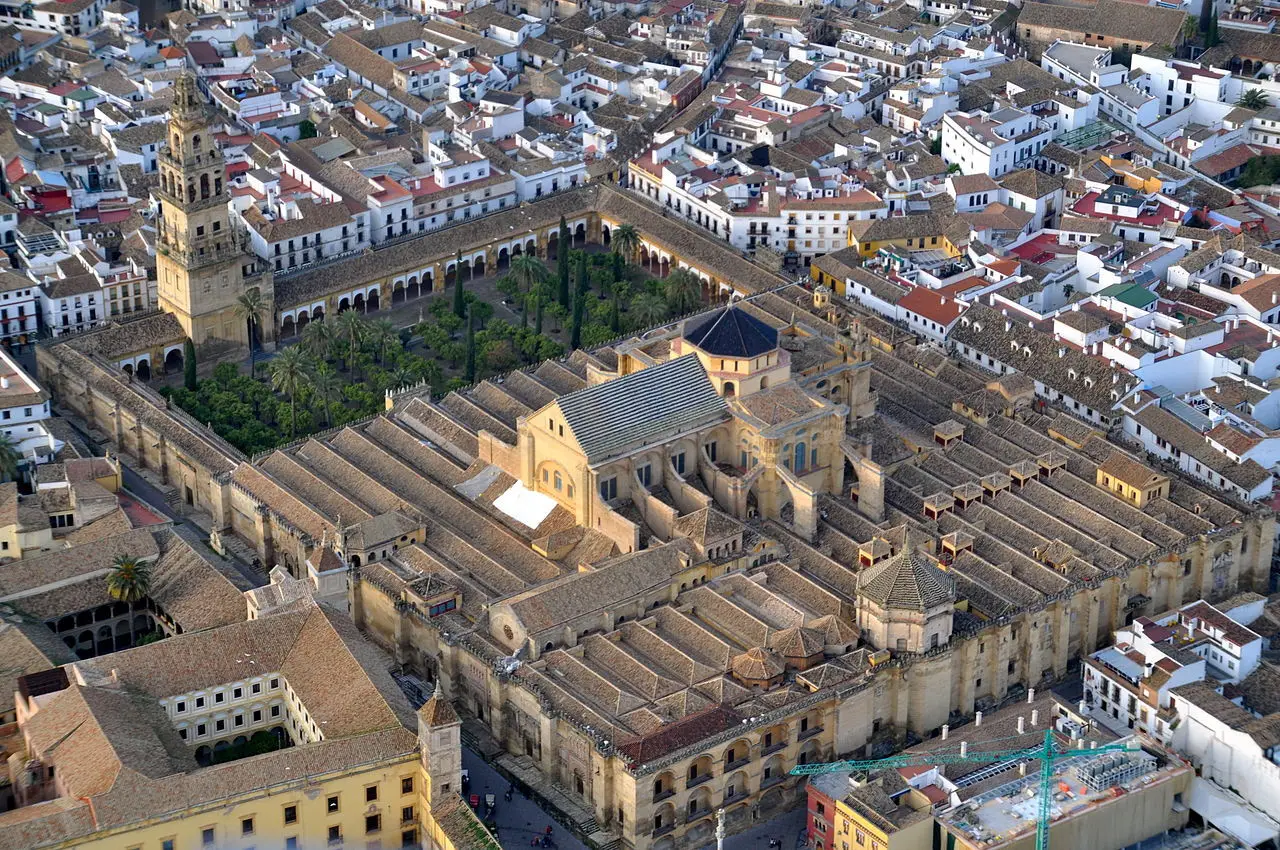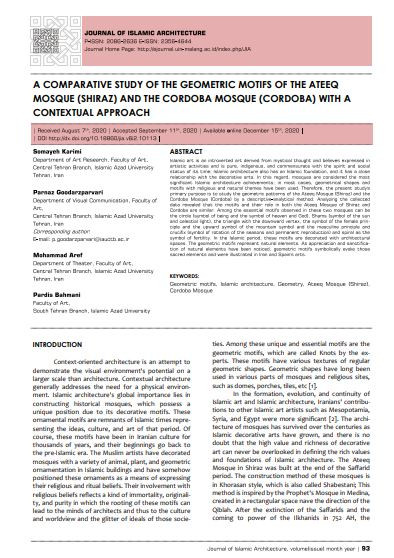

Islamic art is an introverted art derived from mystical thought and believes expressed in artistic activities and is pure, indigenous, and commensurate with the spirit and social status of its time; Islamic architecture also has an Islamic foundation, and it has a close relationship with the decorative arts. In this regard, mosques are considered the most significant Islamic architecture achievements; in most cases, geometrical shapes and motifs with religious and natural themes have been used. Therefore, the present study’s primary purpose is to study the geometric patterns of the Ateeq Mosque (Shiraz) and the Cordoba Mosque (Cordoba) by a descriptive-analytical method. Analyzing the collected data revealed that the motifs and their role in both the Ateeq Mosque of Shiraz and Cordoba are similar. Among the essential motifs observed in these two mosques can be the circle (symbol of being and the symbol of heaven and God), Shams (symbol of the sun and celestial light), the triangle with the downward vertex, the symbol of the female principle and the upward symbol of the mountain symbol and the masculine principle and crucifix (symbol of rotation of the seasons and permanent reproduction) and spiral as the symbol of fertility. In the Islamic period, these motifs are decorated with architectural spaces. The geometric motifs represent natural elements. As appreciation and sanctification of natural elements have been noticed, geometric motifs symbolically evoke those sacred elements and were illustrated in Iran and Spain’s arts.
I agree to the terms outlined below:
You agree to upload and assign Mosqpedia Database the rights to use the content worldwide and in perpetuity across all current and future media platforms. Mosqpedia Database may edit, copy, adapt and translate your contribution.
The content will be distributed under the Creative Commons Attribution-Deed – Attribution-NonCommercial-NoDerivatives 4.0 International – Creative Commons
All data will be stored in line with data protection regulations.